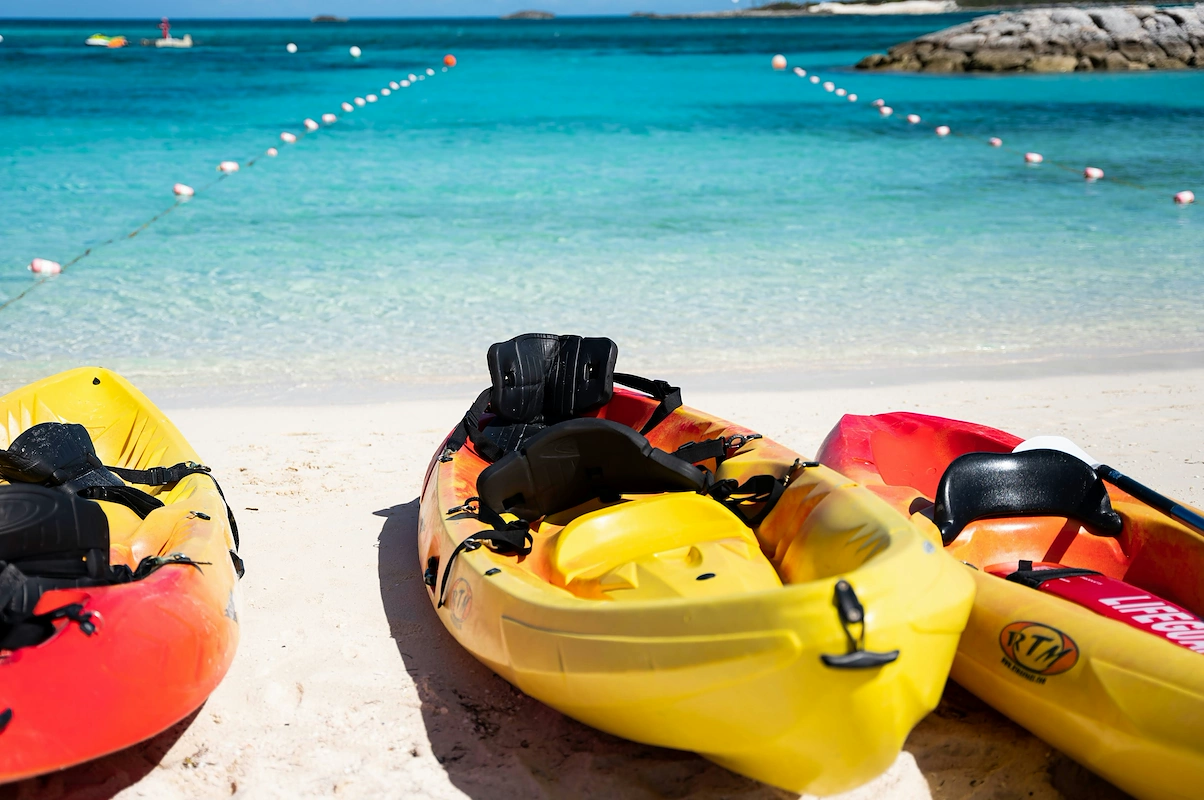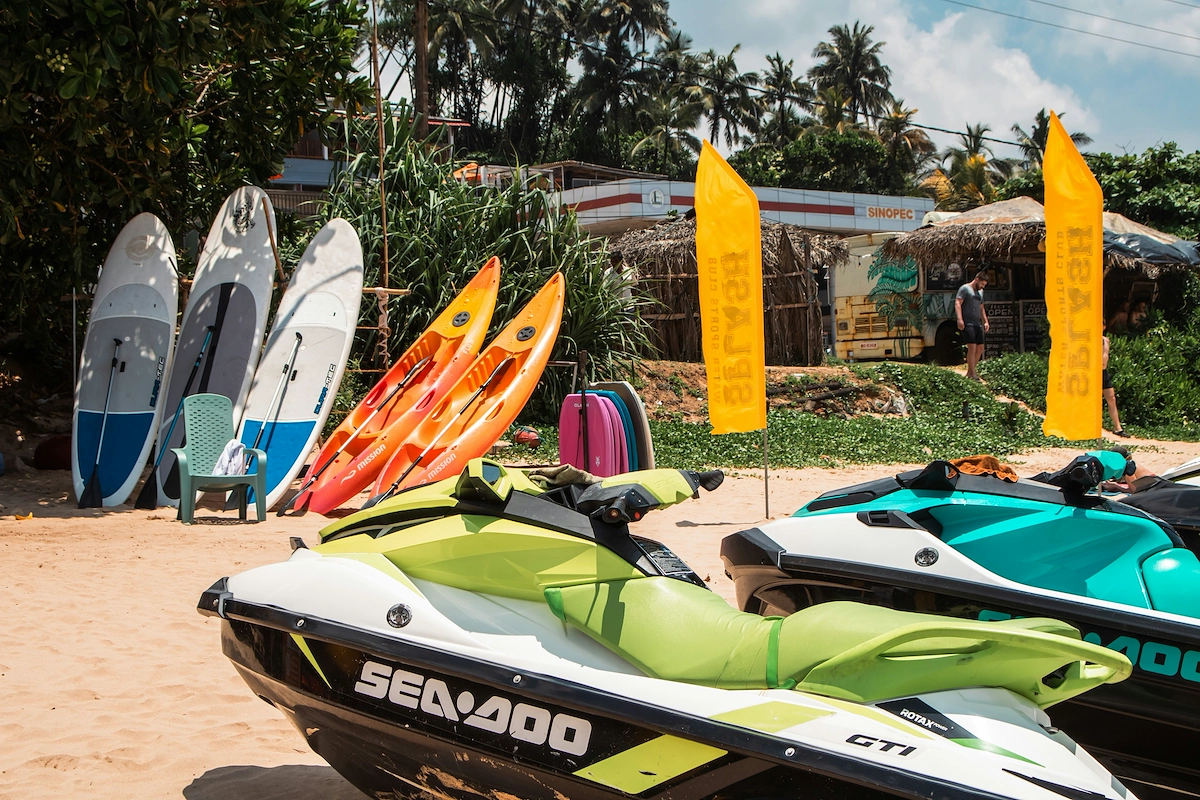Starting a fishing business is an exciting venture that combines a passion for the open water with sharp business savvy. The commercial fishing industry is a multi-billion dollar market, fueled by steady demand from restaurants, local markets, and distributors.
This guide will take you through the practical steps of validating your concept, securing funding, obtaining licenses, and acquiring equipment to help you launch a successful fishing business in the U.S.
Step 1: Plan your business and validate the market
Start by researching your local market. Talk to seafood wholesalers, restaurant chefs, and managers at fish markets. Ask them what species are in demand, what prices they pay, and their quality standards. This direct feedback is invaluable for your plan.
You can also review data from NOAA Fisheries to understand commercial landings and trends. To see your competition, check the National Marine Fisheries Service permit databases to find out who holds permits in your area and for which species.
Understand your startup costs
The financial side requires careful planning. Your initial investment will vary widely based on the type of fishing you pursue. A frequent misstep is to buy a boat before you secure the right permits for your target fishery.
- Vessel: A used boat might cost between $20,000 and $100,000. A new, larger vessel can exceed $500,000.
- Permits and Licenses: These can range from a few hundred dollars for state licenses to over $50,000 for limited-entry federal permits.
- Gear: Expect to spend $5,000 to $50,000 on nets, traps, lines, and electronics depending on your target catch.
- Safety Equipment: Budget around $2,000 to $10,000 for required items like life rafts and emergency beacons.
Here are 3 immediate steps to take:
- Interview at least two local seafood buyers to gauge demand.
- Research the specific state and federal permit requirements for your top target species.
- Create a preliminary budget with low and high estimates for a vessel, gear, and permits.
Step 2: Establish your legal entity and secure licenses
Form your business entity
You might want to consider forming a Limited Liability Company (LLC). This structure protects your personal assets, like your home and savings, from business debts or legal issues. It is a straightforward process you can complete through your state’s Secretary of State website.
Once your business generates consistent profit, you could elect for your LLC to be taxed as an S-Corporation. This move can potentially reduce your self-employment tax burden, leaving more money in your pocket. Consult a tax professional to see when this makes sense for you.
Navigate fishing permits
Your operations will be governed by state and federal agencies. For fishing within three nautical miles of shore, you will need a commercial license from your state’s Department of Fish and Wildlife. For federal waters, permits are managed by NOAA Fisheries.
State licenses may cost a few hundred dollars and take several weeks to process. Federal permits, especially for limited-entry fisheries, are a different story. They can cost over $50,000 and often must be purchased from an existing permit holder, which can take months.
A costly error is to purchase a vessel before you have the correct permit. Always secure the permit for your target fishery first. Otherwise, you risk owning a boat you cannot legally use to generate income.
Here are 4 immediate steps to take:
- Register your business as an LLC with your state's Secretary of State.
- Apply for a free Employer Identification Number (EIN) from the IRS.
- Contact your state's fish and wildlife agency for a commercial license application.
- Research federal permit availability and transfer costs on the NOAA Fisheries website.
Step 3: Secure your insurance and manage risk
Key insurance policies for your vessel
Your vessel requires two primary policies. Hull and Machinery (H&M) insurance covers physical damage to your boat and its equipment. Premiums are typically 1-3% of your vessel’s insured value each year.
Protection and Indemnity (P&I) is your liability coverage. It handles claims for crew member injuries under the Jones Act, damage to other property, or pollution incidents. This policy is a cornerstone of your risk management.
P&I premiums can range from $5,000 to over $20,000 annually, based on vessel size and crew count. A mistake some new owners make is underinsuring to save costs. A single crew injury claim can easily top $100,000, so adequate coverage is a must.
You will want to work with an agent who specializes in the marine industry. Consider getting quotes from providers like Gowrie Group, LIG Marine, or Maritime Insurance International. They understand the specific risks you face.
Here are 4 immediate steps to take:
- Get a formal survey of your vessel to determine its insured value.
- Request quotes for Hull & Machinery and P&I insurance from two marine-specific brokers.
- Confirm your P&I policy includes Jones Act coverage for your crew.
- Ask about adding coverage for your catch and fishing gear.
Step 4: Outfit your vessel and secure dock space
Your primary location is your dock space. You will need a slip in a marina with commercial zoning. Expect to pay monthly slip fees, which can range from $15 to over $30 per foot of boat length, depending on the location and amenities like power and water.
A mistake some new operators make is leasing a slip in a marina that only permits recreational use. Always confirm in your lease agreement that commercial fishing activities, including loading gear and offloading catch, are explicitly allowed. This avoids major operational headaches later.
Vessel outfitting and equipment
With your vessel secured, the next phase is the outfitting. Your electronics are your eyes under the water and your guide on the sea. You will also need equipment to handle your catch properly to maintain its quality and value.
- GPS/Chartplotter: A reliable unit costs between $1,500 and $5,000. This is for safe navigation and marking productive fishing spots.
- Fishfinder/Sounder: Expect to spend $1,000 to $4,000 for a commercial-grade unit that can locate fish and map bottom structure.
- Ice Machine: A flake ice machine is a game-changer for quality. A new one can run from $3,000 to $8,000.
- Insulated Fish Totes: Budget $50 to $150 per tote. You will need several to hold your catch.
For this gear, look to commercial-focused suppliers like Fisheries Supply or Englund Marine & Industrial Supply. They understand the demands of the industry and can provide durable equipment.
Here are 4 immediate steps to take:
- Contact two local marinas to inquire about commercial slip availability and rates.
- Price out a GPS/chartplotter and fishfinder from a marine electronics dealer.
- Get a quote for a commercial flake ice machine suitable for your vessel's size.
- Review a sample marina lease to check for clauses on commercial operations.
Step 5: Set up payment processing
Your payment terms will depend on your customer. Wholesalers and distributors typically pay on Net 30 or Net 60 terms via check or bank transfer. If you plan to sell directly to chefs or the public at the dock, you need a way to accept immediate payment.
Many new owners are not prepared for on-the-spot sales and miss out on revenue. For these direct transactions, you want a payment solution with low fees and no monthly contracts. Most providers charge between 2.5% and 3.5% per transaction, which can add up quickly.
For a fishing business that needs to accept payments on-site, JIM offers a streamlined solution. With JIM, you can accept debit, credit, and digital wallets directly through your smartphone. At just 1.99% per transaction with no hidden costs, it is ideal for dockside sales.
Getting started is simple:
- Get Started: Download the JIM app for iOS.
- Make a Sale: Type the sales amount, hit sell, and ask your customer to tap their card or device on your phone.
- Access Funds: Your money is available on your JIM card as soon as the sale is done, with no waiting for bank transfers.
Here are 3 immediate steps to take:
- Decide if you will sell directly to the public, which requires immediate payment processing.
- Compare the 1.99% transaction fee from JIM with standard Net 30 invoice terms from wholesalers.
- Download the JIM app to review its interface and features for your business needs.
Step 6: Secure funding and manage your finances
Explore loan and grant options
The NOAA Fisheries Finance Program is a primary source for commercial fishing. It offers long-term loans for vessels, permits, and gear upgrades. Loans can range from $100,000 to over $2 million with fixed interest rates, often between 5% and 8%, and terms up to 25 years.
You might also look into USDA Rural Development loans if your operation is based in an eligible area. These government-backed loans often have favorable terms. Some new owners only secure funds for the boat and permit, which leaves them short on operating cash.
Calculate your working capital
You need enough cash on hand to cover your first six months. This buffer pays for fuel, bait, ice, crew shares, insurance premiums, and slip fees before your sales become regular. A good estimate for working capital is between $30,000 and $60,000.
This fund also prepares you for unexpected gear repairs or slow fishing periods. Without it, a single breakdown can halt your business. Track every dollar from day one with simple accounting software to manage your cash flow effectively.
Here are 4 immediate steps to take:
- Contact the NOAA Fisheries Finance Program to review their application process.
- Create a detailed six-month operating budget.
- Research USDA Rural Development loan eligibility for your homeport.
- Speak with a local bank about their experience with commercial marine loans.
Step 7: Hire your crew and manage operations
Assembling your crew
Your first hire will likely be a deckhand. This person handles the gear, sorts the catch, and helps maintain the vessel. As the owner, you will typically serve as the captain. A reliable and experienced deckhand is a massive asset on the water.
Compensation is usually a crew share system. After you deduct trip expenses like fuel and bait from the gross revenue, the boat takes a share, often 50-60%. The remaining amount is divided among the crew. A skilled deckhand might earn 10-15% of the crew’s portion.
A lesson many learn the hard way is hiring inexperienced friends to save money. This approach can compromise safety and efficiency. You are better off with a professional who understands the demands of a commercial fishing deck from day one.
Running daily operations
Your routine extends beyond fishing. You must monitor weather forecasts from NOAA, plan trips based on tides, and keep bait and ice stocked. A simple pre-trip checklist for safety gear, engine fluids, and supplies helps prevent problems offshore.
Depending on your vessel’s size and operating area, you and your crew may need a Merchant Mariner Credential (MMC) from the U.S. Coast Guard. You should confirm these requirements early, as the application process can take 60-90 days.
Here are 4 immediate steps to take:
- Draft a job description for a deckhand that lists key responsibilities.
- Decide on a crew share percentage based on your fishery and vessel costs.
- Create a pre-trip checklist for safety, fuel, and operational readiness.
- Visit the U.S. Coast Guard website to review the MMC requirements.
Step 8: Market your catch and find customers
Build relationships with wholesale buyers
Your primary customers will likely be restaurants and seafood distributors. Approach local chefs with samples of your catch. Quality and consistency are your best marketing tools here. A chef who trusts your product will become a repeat buyer. Expect payment on Net 30 terms.
A mistake some new operators make is to overpromise on volume. It is better to supply one restaurant reliably than to disappoint three. Your reputation for consistency is your most valuable asset in the wholesale market.
Sell directly to consumers
Direct sales at the dock or at a farmers' market can increase your profit margins by 25-50%. Use a simple Instagram or Facebook page to announce your daily catch and sale times. A clear photo and a specific time create immediate demand from local seafood lovers.
You can also explore a Community Supported Fishery (CSF) model. Customers pay upfront for a "share" of your season's catch. This model provides you with operating capital at the start of the season and guarantees sales.
Here are 4 immediate steps to take:
- Identify three local restaurants known for fresh seafood and schedule a meeting.
- Create a business Instagram account and post your first "catch of the day" photo.
- Research the application process and fees for your local farmers' market.
- Draft a simple flyer for a Community Supported Fishery (CSF) to gauge interest.
Step 9: Price your catch and set payment terms
Establish your pricing strategy
Your price depends on who you sell to. For wholesale to distributors or restaurants, you will typically sell by the pound. Research current ex-vessel prices, what fishermen are paid at the dock, on the NOAA Fisheries website to get a baseline for your target species.
Direct-to-consumer sales at the dock or farmers' markets allow for higher prices. You can often charge 25-50% more than the wholesale price. This model boosts your profit margin but requires you to handle smaller, individual transactions.
Many new owners just match market prices without knowing their own numbers. Before you sell a single fish, calculate your break-even cost per trip. Add up fuel, bait, ice, and crew shares. This ensures every sale is profitable.
Define your payment terms
When you sell to wholesalers, expect to offer payment terms. Net 30 is standard, meaning you get paid 30 days after you issue an invoice. Some larger distributors may ask for Net 60, so be prepared for that cash flow delay.
For direct sales, payment is immediate. You need a way to accept cash or credit cards on the spot. This provides instant cash flow that can help cover your daily operating expenses while you wait on wholesale payments.
Here are 4 immediate steps to take:
- Research the current ex-vessel price for your top two target species.
- Calculate your break-even cost per trip, including fuel, bait, and crew shares.
- Decide on a markup percentage for direct-to-consumer sales.
- Prepare a simple invoice template with Net 30 payment terms for wholesale buyers.
Step 10: Maintain quality and scale your operations
Keep your catch top-grade
Your reputation hinges on quality. The key metric is temperature. Your catch must be chilled to below 40°F as quickly as possible. You should also develop a basic Hazard Analysis and Critical Control Point (HACCP) plan, which is required for selling to some wholesale buyers.
A frequent error is leaving fish on deck too long after the haul. This delay can lower the value by 25% or more. Get your catch into an ice slurry immediately to preserve its quality and your profit margin.
Know when to expand
Growth should be data-driven. When you consistently fill your hold and have demand you cannot meet, it is time to consider scaling. This could mean hiring a second deckhand or upgrading to a larger vessel with more capacity.
To manage this, you can use industry software. Programs like Deckhand Log or FishTrax help track catch data, trip expenses, and crew settlements. This information gives you a clear picture of your profitability and helps you make informed decisions about expansion.
Here are 4 immediate steps to take:
- Draft a basic HACCP plan outlining your process for chilling and storing fish.
- Set a revenue or volume benchmark that would trigger hiring a second deckhand.
- Research catch logging software like Deckhand Log to see how it fits your operation.
- Review your permit's quota limits to see if a larger vessel is a viable next step.
Success in this industry is built on trust just as much as a good catch. Your reputation for quality will be your anchor. You have the plan to get started. Now it is time to cast off and begin your venture.
And when you make those first dockside sales, you will want a simple way to get paid. JIM turns your phone into a card reader for a flat 1.99% fee, with no extra hardware. Download JIM to be ready for business.















